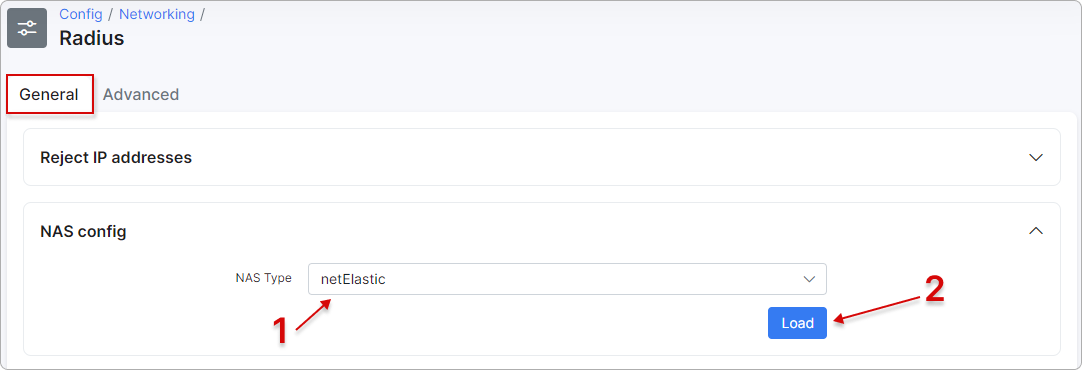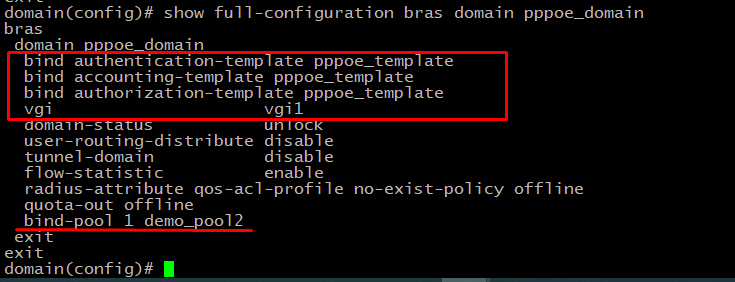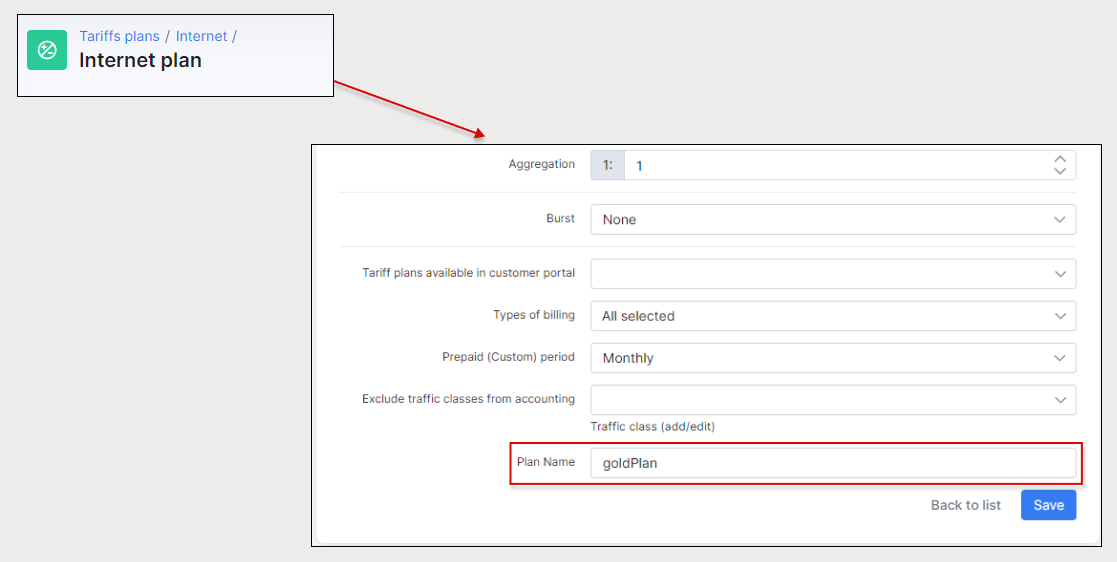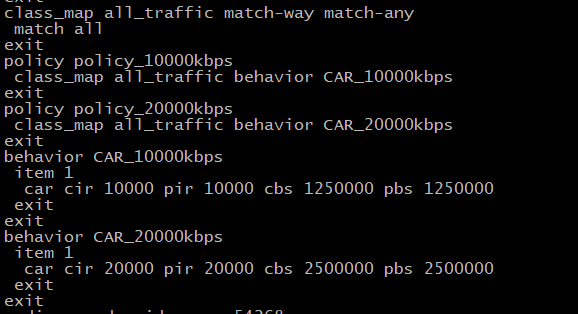¶ netElastic vBNG: PPPoE, Radius
- Overview
- Step 1 - Interface setup
- Step 2 - RADIUS Authentication group
- Step 3 - Creating a VGI interface
- Step 4 - Creating a domain
- Step 5 - Creating a PPPoE template
- Step 6 - Enabling NAT
- Step 7 - Configuration on the Splynx side
¶ Overview
In this guide we’ll show you how to properly configure virtual Broadband Network Gateway (vBNG) solution from netElastic (www.netelastic.com) along with its integration with Splynx ISP Framework (www.splynx.com).
We’ll demonstrate how Splynx Radius server can be used for complete AAA (Authentication, Authorization & Accounting) coverage of your customers.
So, let’s get started. We’d assume that you already have freshly installed instances of vBNG Router, vBNG Manager and Splynx up and running. In our demo we’ll be creating a test user with certain parameters using our Splynx solution and then connect him over PPPoE session to Internet through vBNG device.
The lab setup is shown below. This test case shows how to configure vBNG to work with PPPoE access with Radius authentication, authorization, and accounting.
The process of configuring PPPoE connections on the vBNG with Radius authentication, authorization and accounting involves:
-
Configuring access interface
-
Creating a PPPoE template
-
Creating a VGI interface
-
Creating Radius Authentication group
-
Creating Radius Accounting group
-
Creating AAA Authentication template
-
Creating AAA Authorization template
-
Creating AAA Accounting template
-
Creating an IPPool
-
Creating a domain
-
Creating and configuring VCI
¶ Step 1 - Interface setup
So, we’ll start with the interfaces first. As seen on the screenshot below, our vBNG is installed on a server with two 10Gb NICs; the 10gei-1/1/0 interface will be used as an access interface (incoming for customer’s links), that is UNI (User Network Interface) on the diagram.
The second physical interface, 10gei-1/1/1, will be used as a network interface (outgoing to Internet), and that’s NNI (Network-to-Network Interface) accordingly.
We assigned the following IP address 192.168.10.10 to 10gei-1/1/1, and our interface setup looks the following way:
Please note there is also a NAT-related parameter here, we’ll be discussing it further in this guide.
¶ Step 2 - RADIUS Authentication group
Next, moving on to RADIUS Authentication group creation, which is used for authorization as well. We created ‘demo_group’ with the following parameters:
Our RADIUS server is located at IP address 192.168.10.3, as shown in the diagram. It uses the default port 1812 and the key provided above. Please update these values according to your own setup. If configured correctly, you should be able to test the connection to the RADIUS server through the vBNG Manager GUI.
Now we create Radius Accounting group ‘acc_grp’ with the following configuration. It’s similar to Authentication group above, except it uses port 1813.
We also need to enable Radius accounting under the Radius configuration.
Next, we create an Authentication template. For Radius authentication, we need to specify authentication type to use Radius. Here is our configuration.
Radius authorization means vBNG will take authorization properties such as user’s IP address, QoS plan, ACL rules, etc. from the attributes carried in the Radius accept reply message instead of using locally configured properties. To achieve this, we need to create an authorization template from which to specify Radius authorization.
Similarly, we create an Accounting template.
Now we need to configure an IP pool from which PPPoE access subscribers’ IP address will be assigned via DHCP. netElastic’s vBNG provides flexible IP pool configurations that can span multiple disjoint segments. In this example, we will configure one IP segment 192.168.100.1/24 with gateway IP 192.168.100.1 Since we’ll be managing the IP allocation on Splynx itself, we have to reserve the IP range on vBNG, so it honors the IPs assignments obtained via Radius.
¶ Step 3 - Creating a VGI interface
Next, creating a VGI interface. Subscribers need to have an access gateway configuration on the vBNG to have network access. netElastic’s vBNG implements the concept of Virtual Gateway Interface (VGI) to configure subscriber’s access gateway. The VGI interface IP address shall match the gateway address in the IP pool configuration as described above.
¶ Step 4 - Creating a domain
We have created authentication, authorization & accounting templates, an IP pool, and a VGI interface. Now we need to create a domain to tie all these together and bind the domain to PPPoE access to achieve the desired access behavior. A user access domain defines user access behavior.
Multiple domains can be defined for the same access method to define different behaviors. User’s access domains can be switched during operations (through Radius COA or command line) to alter access behaviors.
Same information displayed in the vBNG Manager web interface.
¶ Step 5 - Creating a PPPoE template
Next, we create a PPPoE template. The parameters ppp-authentication, ac-name, default-domain should be configured according to your own setup.
Finally, we need to create a VCI configuration to tie the PPPoE template and the domain to the access interface so the access behavior for traffic coming to the interface will be subject to what we have defined in the PPPoE template and domain template.
In our test case for the users to be able to access the Internet we need to enable NAT on both the network interface (NAT outside) and the access side user gateway (NAT inside).
Here is the sample NAT configuration for our case.
¶ Step 6 - Enabling NAT
Also we need to enable NAT in the authorization template.
¶ Step 7 - Configuration on the Splynx side
This pretty much completes the setup on the vBNG side and now it’s time to perform some additional configuration on the Splynx side.
First off, let’s add our vBNG to Splynx, so they can communicate properly. Go to Config → Networking → NAS types and add a new one.
Go to Networking → Routers → Add and add our vBNG with the configuration according to the diagram.
For our test case we created a demo user with an assigned Internet tariff plan.
We want him to obtain an IP address from Radius, so assigned a static one for testing purposes.
So, let’s say we also want him to have a certain rate limit on the internet service, for instance 20mbit/10mbit. This is how to configure it properly on both sides, vBNG and Splynx accordingly.
In Splynx we have to edit the internet plan by adding an additional field, which will be sent by Radius to vBNG QoS engine in order to define the policy applied to customers.
To add a new field, navigate to Config System Additional fields and select a proper module. In our case, this is "Internet plans":
In order for this functionality to work, let’s make additional tweaks to the Radius configuration. Go to Config → Networking → Radius, under NAS Config section choose netElastic for NAS type from the drop-down menu and click the Load button.

Under netElastic Configuration scroll down to Rate-Limit attributes and enter as follows:
NetElastic-Qos-Profile-Name = {{tariff_attributes.plan_name}}
Here, NetElastic-Qos-Profile-Name is the parameter which tells the vBNG’s internal QoS engine which policy to apply, so essentially, we are sending from our Radius NetElastic-Qos-Profile-Name=goldPlan as per configuration described earlier.
The QoS configuration on the vBNG side involves the following steps:
-
Create class_map to define the flows for which QoS behaviours are intended to be applied on. class_map can be defined either directly by listing flow characteristics or by referencing defined ACL lists.
-
Create intended behaviours for the class_map rules defined. The behaviours supported by vBNG are car, cbq, remark, etc.
-
Create policies to create class_map and behaviour pairs and setup the relative priority among them. Each policy can have up to 8 class_map/behaviour pairs.
-
QoS policies can be directly applied to interfaces.
-
If QoS policies need to be applied to subscribers, user QoS profiles need to be created where both the upstream and downstream policies can be specified. The defined user QoS profile is then referenced in the authorization template of the user’s access domain. All users accessing through this domain are subject to the QoS policies defined in the user QoS profile.
Here is the configuration for our test case.
Same configuration referenced in vBNG Manager
The QoS profile is attached to the authorization template as follows:
If everything is configured properly, you should be able to see the various accounting information related to our test user in the Splynx dashboard.






























